请尊重劳动成果,转载请注明出处及作者。
Source:http://ftr.wot-news.com/2013/11/19/superheavy-japanese-tanks/
来源↗
Probably the most famous Japanese heavy tank is the O-I, a 120 ton multi-turreted gargantuan monstrosity. There is something appealing to it to say the least. But maybe it was actually 140 tons. There reflects the difficulty about this tank.
日系最出名的重坦大概就是O-I了,一个120吨多炮塔的钢铁怪兽。 总的来说,它还是挺有意思的。但是也许它真实的重量是140吨。重量上的差异反映了这个坦克所遭遇的重重困难。
To get started, I find it might be helpful to draw out the full extent of Japanese heavies. It could help put things in perspective. So real quickly, here is a list of all Japanese heavy tanks possible for WoT with a few handy facts for each. All are multi turreted except for the noted Heavy X which I do not know anything about. Armor is listed in a front/side/rear format if the numbers are available. Otherwise just the maximum armor is given. The 100 ton and the O-I will be discussed afterwards.
首先,我发现把日系整条重坦线都搞出来有助于大家对重坦的理解。 这样从宏观角度看起来就会有些帮助。所以以下是所有可以塞进WOT的日系重坦,顺便带了一些它们的数据。所有坦克都是多炮塔车辆,除了那辆我一无所知的X重坦。装甲是以正/侧/后的形式列出的(单位均为毫米——译注),当然是在能找到数据的前提下。否则只会列出最厚装甲数据。那辆百吨和O-I坦克稍后再讨论。
91式
建造数量: 1
建造日期: 1931年前后
组员数量: 5人
主炮: 短管70mm
重量: 18吨
发动机出力: 224hp
装甲: 20mm
Based off Japan’s very first tank, the Experimental 1 tank.
本坦克是基于日本非常早期的实验1型坦克而制造的。
95式
建造数量: 4
建造日期: 1935年
组员数量: 5人
主炮: 短管70mm
重量: 26吨
发动机出力: 290hp
炮塔装甲: 30/25/25 车身装甲: 35/30/25
Improved firepower via forward mini-turret mounting a 37mm cannon. Improved armor and suspension redesigned.
通过增加了一个向前的加装37mm炮的小炮塔提高了火力。增强了装甲,以及重新设计了悬挂装置。
百吨
建造数量: 1
建造日期: 1940年 (没通过机动性测试)
组员数量: 11人
主炮: 105mm炮
重量: 100 tons
发动机出力: 550马力 x2 总计 1,100 马力
装甲: 车身正面: 150mm 车身侧面: 70mm
Top secret project initiated right after the Japanese suffered defeat from the Soviet Union in 1939.
在日本在1939年败给苏联之后立刻开始的绝密计划
O-I
建造数量: 1 (要么是造好了或者是没造好的原型车)
建造日期: 与1944年开始,计划持续时间长度不明. 有可能持续到了1945年8月
组员数量: 11人
主炮: 105mm炮
重量: 120 或 140 吨
发动机出力: 550马力 x2 总计 1,100 马力
炮塔装甲: 200/200/200 车身装甲200/110 或者部分装甲区域厚度 75 以及其他部分 35/150
Probably intended for Manchuria.
估计是给满洲制造的
X重坦
WG stated that a tank for tier 10 has been found. It was stated as huge and massive but still not heavier than the Maus. There is no official name that I know of.
WG曾经表示10级重坦候选车辆已经有了。它与鼠式一样大,但是还是没有鼠式重。我并不知道它的官方名称。
The information that follows comes from multiple sources. The core parts all match but there are some inconsistencies. It is difficult to say which is true or false. The facts in the sources are mostly from what was described by those involved or on rumors. There are very little primary sources available like photos or complete original blueprints that could enable more consistency on available information. However Suzuki from Finemolds does have a collection of primary sources on the 100 ton tank. Aside from Suzuki, the other sources themselves often indicate how some history or technical details are speculated and remain unconfirmed. Some sources present information not giving in the other sources. So here will be a list of the sources along with reference abbreviations in parenthesis so that the reader can know where each bit of information is coming from after a little familiarization. I am afraid that while very interesting, reading this might be difficult to grasp at first because of all the different sources.
以下信息的来源渠道很多。 最重要的部分是一样的, 但是依然有一些矛盾的地方。很难说那是对的还是错的。信息的来源基本就是从那些参与了该项目的人得到的,或者是一些流言。原始文献,例如照片和可以对现有信息进行统一的原来的蓝图的数量很少。然而Finemods(一个日本模型网站,或称ファインモールド——译注)的“Suzuki—铃木(暂称)”的确拥有一整套关于百吨的原始文献。除了铃木之外,其他的文献通常都表明了有些历史性和机械的细节部分都是推测,或者是未经确认的。有些文献中的信息在其他文献中并没有被提到。以下是一个文献列表,它们名字简写都会放在名字后面的(括号)中,读者可以在一段时间的熟悉后更加顺畅的阅读这篇文章。尽管这些东西很有意思,但是由于消息来源的多样性,一开始有可能还是很难理解。
Pacific War Secrets: All Japanese Secret Weapons (JSW)
太平洋战争秘史:日本所有的秘密武器(简写为:JSW)
Imperial Japanese Army Land Weapon Guide (LWG)
日本皇军地面武器指南(简写为:LWG)
Tank and Tank Battles (TTB)
坦克以及坦克战争(简写为:TTB)
Japanese Tanks (Hara – The primary author)
日本坦克(简写为:Hara——该书主作者)
Suzuki’s pictured sources (Suzuki – Has the only primary sources from what I understand and thus likely to be the most accurate of all. Well, there could be more primary sources that are still being held secretly)
铃木的图片们(简写为:Suzuki——如果我没理解错的话,只有他拥有那些原始的文献,也是文献中最准确的一些。呃,也许还有更多依然处于地下状态的文献没有被公开。)
The Phantom 100 ton Super Heavy Tank
幽灵百吨超重坦
Below is from a section in TTB unless stated otherwise.
除非另注,则以下均为TTB中摘抄而来
The writer of this section is Shigeo Otaka who was a Mitsubishi engineer involved in the 100 ton tank’s development. He states that in this section he applied information from other people involved in the project but due to the passage of time and the secret nature of the military program, he is unable to give a complete description of the tank. The description is made only from collective memories of those involved however the main features can be described.
这一段的作者是Shigeo Otaka,曾经参与过百吨开发的三菱的工程师。他在这一段中表示他把其他同样参与了这个计划的人嘴里的信息也谢了出来,但是鉴于时光流逝, 以及军方计划天然的保密性,他无法给出对坦克的完整的描述。描述都是基于记忆而写的,然而主要的机能还是可以被描述出来的。
The project was under the supervision of Colonel Murata from the 4th Technical Research Head Quarters. JSW says that Colonel Iwakuro from the Department of War gave the order to build the monster. The order to build the 100 ton tank came immediately after the defeat against the Soviet Union in the Nomonhan incident in 1939. LWG gives a quote from a position and ranked officer that is the same as Colonel Iwakuro but does not gave the officer’s name. Probably still Iwakuro. Quote and picture of Iwakuro below.
该计划是在第四科技研究总部的Murata上校的监督下进行的。JSW表示战争部门的Iwakuro上校下达了建造该钢铁巨兽的命令。该命令是在日军于1939年在诺门坎事件中败给苏联之后立刻下达的。LWG引用了一条与Iwakuro上校职位相当的人的话,但是并没有注明名称。也许也还是Iwakuro说的吧。以下是引用以及Iwakuro的照片。
「満州の大平原で移動トーチカとして使えるような巨大戦車を作ってほしい。極秘でだ。」
“I want a huge tank built which can be used as a mobile pillbox in the wide open plains of Manchuria. Top secret.”
“我想要造一辆可以在满洲的大平原上作为移动碉堡的大坦克。绝对机密”
Here is another quote from LWG of an undisputable requirement from the Colonel.
以下是LWG的另一条从上校那里得来的毋庸置疑的需求原话
「今の戦車の寸法を2倍に延ばして作れ」
“Make the dimensions twice that of today’s tanks.”
“把坦克的大小搞成现在的两倍”
Hideo Iwakuro:
Shigeo Otaka and several others were guided multiple times throughout a wooden barracks that used to be the headquarters of the 4th Technical Research Group, sometimes crammed together in small rooms. Under strict rules to speak of nothing of what will be seen, the group of people was finally led to a secret room. The room had a two door entrance to reduce the chance of eyes catching a glimpse of the interior. Nobody outside of the room knew what was going on. Here, the plan was pulled out in lots of random pieces. It was an effort for the group just to bring all the pieces together but eventually the secret tank image appeared. There were some concerns whether the tank would be able to move or how it could be transported but those concerns were kept individually private. However, the behemoth was both imposing and impressive.
Shigeo Otaka以及其他人被许多次的带过一个木头兵营,就是曾经的第四科技研究组的总部,有时候他们会挤在一个小房间里。 在下达了不要说出任何所见之物的命令后,这群人最终被领到了一个秘密房间中。这个房间有两道门,以防止从外部可以偷窥到房间内部。房间外面的人完全不知道里面发生了什么。在那个房间里,计划被分成了许多随机的小块。这是为了让整个小组的所有人把那些小块都带到一起,最终可以让坦克的图像显现出来。曾经有过对于坦克是否可以移动或者如何运输坦克的疑问,但是那些疑问最终还是个人的疑问。然而,这个钢铁巨兽依然是非常的惊人。
Total length was 10 meters. Total width was 4.2 meters, and total height was 4 meters. Height without the turret was 2.5 meters. Track width was 900mm. The power plant was two 550 horsepower air-cooled gasoline engines for a combined horsepower of 1,100hp. Top speed was 25kph.
总长10米。总宽4.2米,总高4米。除去炮塔的高度是2.5米,履带宽度为900mm。 动力来源为两个风冷的550马力汽油机,总计1100马力。极速为25公里每小时。
This section from the TTB writes that the army called it the O-I and Mitsubishi called it Mi-To (Mitsubishi-Tokyo). Hara, JSW, and LWG call only the 120 ton tank the O-I so TTB could be mistaking here. JSW and LWG say the O-I was called Mi-To and not the 100 ton tank. Hara does not mention “Mi-To” but does say that both the 100 ton and the O-I were developed by Mitsubishi. Perhaps both were actually called Mi-To. At least according to Hara, the “Mi” part is true for both. Maybe both were also made in Tokyo. JSW says that according to one rumor, that when the O-I was completed, it was disassembled at Mitsubishi Heavy Industries Shimo Maruko factory to be shipped to Manchuria. Shimo Maruko is in Tokyo. It seems to me that both the 100 ton and the O-I were called Mi-To.
TTB的这一段表示军方把它叫做O-I,而三菱则把它叫做Mi-To(Mitsubishi-Tokyo(三菱-东京))。Hara,JSW以及LWG都只把那辆120吨的坦克叫做O-I,所以TTB在这里有可能是错的。JSE和LWG都表示O-I的名字是Mi-To,而不是那辆百吨。Hara并没有提到“Mi-To”但是的确说过百吨和O-I都是由三菱在开发的。大概这两辆坦克都叫做Mi-To吧。至少根据Hara的说法,“Mi”这个部分是对的(Mistubishi——三菱)。也行这两辆坦克都是在东京制造的。JSW表示根据一个传言,当O-I完工时,它在三菱下丸子重工厂被解体,以便运送到满洲去。下丸子这个地方在东京市内。看起来百吨和O-I都被叫做Mi-To。
Perhaps, and this is again pure speculation I am going to interject here, but perhaps do to the terrible failure of the mobility test (which you will soon read) led people to forget using the O-I name for the 100 ton due to its fail. The naming convention that the O-I was from was in effect at the time the 100 ton was in development. If all testing was successful, perhaps the 100 ton would have become the O-I which would mean the 120 ton would have to become the O-Ni.
我在这里要插一句了,这些有可能都是纯猜测。但是鉴于在机动性测试上彻头彻尾的失败(你稍后就会读到)让人们渐渐的就不把百吨叫做O-I了。O-I的命名其实是在百吨依然还在开发中的时候就有了的。如果测试什么的一切顺利的话,百吨也许就会被叫做O-I,也就意味着那辆120吨的坦克会被叫做O-Ni。
Anyway, continuing on with the TTB 100 ton tank section…
无论怎样,继续TTB的关于百吨的部分……
The two engines were placed length-wise parallel to each other in the rear section of the tank. Both engines were used at the same time which made it difficult to use. The structure of the transmission was the same as the Type 97 Chi-Ha however the gears were heavy. The 5-speed forward gear lever was in center front of the driver and both hands were used to adjust the lever. The tank was rear-wheel driven. The engine, driver, and transmission layout is illustrated in picture 1 a couple of paragraphs down.
两个引擎是以互相平行并间隔一段距离的办法置于坦克后部的。两个发动机是同时发动的,使得它很难使用。传动装置的结构是和九七式中战车チハ是一样的,但是齿轮更重一些。五档变速的变速杆位于驾驶员的正前方,并且需要你用双手才能操作变速杆。这个坦克是后轮驱动的,发动机,驾驶员以及传动装置的摆放请参考下方的图1.(Picture1)
The design of the suspension in picture 2 used coil springs. Each side of the tank used 3 of these 4-wheel sets for a total of 12 road wheels per side. The drawings from Suzuki have 8 wheels which would mean 2 sets, not 3 sets per side. Other artist impression drawings also have 8 wheels and a few have 10 wheels. In my opinion, 8 is most likely to have been the case. The road wheels had no cushion like rubber at all. The hard metal wheels contacted directly with the tracks.
图2(Picture2)上的悬挂装置的设计采用了螺旋弹簧。坦克的每一侧使用三组这样的四轮悬挂,也就是说每侧有12个负重轮。Suzuki的草图显示每侧只有8个轮子,也就意味着只有两组悬挂,而不是三组。其它画家的印象画上都只有8个轮子,少数画上有10个轮子。依我看来,(每侧有)8个轮子的可能性很高。负重轮上根本就没有什么用橡胶做的缓冲材料,金属轮子是直接与履带进行接触的。
All the armor was made with soft steel. Some other Japanese prototype tanks have also been made with soft steel such as the Type 4 Chi-To 57mm cannon prototype in 1944. The front was 75mm thick with an additional 75mm thick plate stuck on for a total thickness of 150mm. The side hull was 35mm thick. Over the side hull and over the suspension were side skirts with a thickness of 35mm bringing the total side armor thickness to 70mm. The side hull armor and side skirt armor is illustrated in picture 3.
所有的装甲都是由软钢制成的。日本其他的一些原型坦克也都是用软钢制成的,例如1944年制的四式中战车チト的57mm炮原型车。(此处指百吨)正面装甲有75mm厚,上面又额外覆盖了一层75mm厚的铁板,总计150mm。车身侧面的装甲厚35mm。而在车身侧面和悬挂外侧又覆盖了一层35mm厚的侧裙甲,也就让侧面装甲的厚度达到了70mm。侧面装甲以及裙甲如图3所示(Picture3)
It was easy to stand within the interior of the tank and there were even paths throughout the vehicle. The driver’s compartment, central fighting compartment, and engine room were separated by 16mm thick walls.
在坦克内部,想要站起来并非难事,在坦克内部甚至还有供人走动的过道。 驾驶员的隔间,中间炮塔所在的隔间以及发动机室是由16mm厚的墙互相隔开的。
There was no window for the driver and thus used a periscope instead. Aside from the gear lever and the accelerator, everything else was hydraulic which made it easy to drive.
驾驶员那里没有窗户什么的,作为替代品,他有了一个潜望镜。除了油门和变速杆之外,剩下所有东西都是液压的,也就让这辆坦克便于驾驶。
For testing, it was shipped to Sagami Armory. Only the people involved in the development of the tank did the transporting and it was a major ordeal. The tank was covered with awning and shipping started at 2:00am at night and ended when night was broken by the sun. Transportation took 10 days. Sagami Armory was located in Kanagawa which is adjacent to Tokyo giving more support to the idea the 100 ton tank was in fact built in Tokyo thus having the name “Mi-To” plausible.
为了进行测试,这辆坦克被运到了相模军工厂。只有那些参与了坦克开发的人进行了坦克的运输工作,而且运输这辆坦克是一种折磨。坦克被篷布所覆盖,且运输从凌晨2点开始,直到日出为止。运输花了10天的时间。相模军工厂坐落于神奈川,离东京很近,也就让这辆百吨坦克其实是在东京制造的,且获得了“Mi-To”这个名字是事实看上去有了点说服力。
On the day of testing, Colonel Murata was called to the battle front so in his place for observation was Lieutenant Colonel Nakano. The chief of Sagami Armory was also there, Tomio Hara himself. The ground at the location was quite soft so during off-road testing, as the tank drove, its treads sank into the ground by a meter. Vehicle rotation would also cause the tank to sink. Perhaps due to stiff coil spring cushioning, the road wheels came out. That canceled the test. On a concrete road, bits of both tracks came out and the concrete was ripped. After test, a full bow with both hands to the ground was made to the repair department chief and that put an end to the 100 ton tank. It was covered with awning again and left there until 1944 when it was finally scrapped.
在测试当天,Murata上校正在前线参加战斗,所以观察这辆坦克的人就由Nakano中校担任了。相模军工厂的主席Tomio Hara也出席了。测试场地的地面太软了,以至于这个坦克刚开上去就向下沉陷了1米。车辆的转向也导致了坦克的下沉。也许是因为螺旋弹簧僵硬的缓冲作用,负重轮都掉了出来。这导致他们停止了测试。在混凝土地面上,两条履带各裂开了一点,混凝土地面也裂开了。在测试之后,他们对修复部门的主席进行了一次土下座以表达歉意,这也宣告了百吨坦克的终结。它最后又被篷布盖上,直到1944年这个计划被彻底报废之前,它都被留在了那个地方。
Another section in TTB contains an interview with four Mitsubishi tank engineers during the Imperial Japan era. Below is a picture of them.
TTB里的另一个部分包括了一个与日本皇军时期的三菱工程师的访谈。以下是他们的图片。
Information from the interview feels a little vague but some additive bits are described here. Two turrets were lined up (mini-turrets in the front I assume), top speed was 40kph (begs for some skepticism if I may say so), and armor was 100mm. There is no existing photo. It was a top secret project under military order. There were many pains regarding issues like whether or not to make it lighter, to make it roomier inside, and to cut down on complexity.
访谈中的部分信息让人感觉云里雾里的,但是同时他们给出了一些额外的信息。两个炮塔是并排放置的(我猜是前面的两个小炮塔),最高极速是40公里每小时。(我此处持怀疑态度),装甲厚度是100mm。但是并没有现存的照片。它是军方直属的绝密计划。他们在
Hara described the 100 ton as the following. In 1940 a 100 ton super heavy prototype was built. Its outside appearance resembled the Type 95 heavy tank. The main armament was a 10cm cannon (meaning 105mm cannon most likely. There is no source that specifically says what 10cm cannon was used. The Type 92 is the likely case but maybe it could have been something else). Mini-turrets were present on both the front and rear of the tank. The number of mini-turrets is not described. The suspension type was coil springs and the tank was camouflaged. The tank was tested but failed and thus later was destroyed.
Hara是这样描述百吨的。1940年,一辆百吨的原型车被造了出来。 它的外形类似于九五式重战车。以一杆10cm的炮作为主炮(很有可能指的是105mm炮,因为没有任何来源可以指出它使用了一杆10cm的炮。当然你也可以说这是九二式十糎加農砲,但是也有可能是别的东西。)小炮塔们在车的正面和后面都有。但是并没有给出小炮塔的具体数量。悬挂类型的确是螺旋弹簧,坦克还被涂上了迷彩。坦克进行了测试,但是于测试中失败,后来就被摧毁了。
Suzuki shows three mini-turrets. Two lined up in the front and one in the rear. His pictures below.
Suzuki的图上表示一共有三个小炮塔。两个并排放在车前,一个放在车后。以下是他的图片。
LWG says that the 100 ton tank hull was completed and underwent testing. Despite the fairly detail account provided by TTB, no turret details were giving. So it seems very likely that the 100 ton tank was tested without the turret (or turrets).
LWG表示百吨坦克的车身其实已经竣工并且投入测试过。尽管TTB提供了比较详尽的数据,LWG没有给出炮塔部分的细节数据。所以百吨坦克的测试很有可能是在没有炮塔(或者炮塔们)的情况下进行的。
A shrine in Japan called the Wakajishi Shrine has (or had) on display a very large track link. Suzuki stated that while the link seems like it belongs to the O-I, it’s more likely that it belongs to the 100 ton tank. The track link has the same shape as a Chi-Ha but just much larger. It is so heavy that 1 man cannot lift it. The width is about 800mm and the pitch is about 300mm. Here is a link to the webpage with the track link at the bottom of the page (also below) and what is described in this paragraph in the Japanese text right of the track link picture (source:Wakajishi shrine page)
日本的若狮子神社(曾经提到过,位于日本静冈县富士宫市,2013/08/15 QA中出现过——译注) 展示了一块(或者说曾经展示过一块)非常巨大的履带的一片。Suzuki表示尽管那个履带片看起来很像是O-I的履带片,但是它更像是百吨的履带。这个履带片的形状与九七式中战车チハ很像,但是大很多。它也很重,一个人是拿不起来它的。宽度大约是800毫米,沥青大约300mm厚。以下是一个链接,会将你重定向到神社的页面,页面最下方是这张履带的图片(即下图),在图片的右侧是以日文写就的说明性文字。(来源:若狮子神社)
The O-I Monstrosity
巨兽O-I
In the name “O-I” (pronounced as oh-ee), the “O” means big, or in tank lingo, heavy, and the “I” means “one” or “first”. So it means “First Heavy”. Many Japanese tanks comply with this naming convention. If the O-I was ever completed, it would have received a “Type” designation in the front. Anyway…
在”O-I”这个名字中,(发音为哦-意),“哦”的意思是巨大的, 用坦克的行话来说就是重型的。而“意”的意思是“一”或者是“第一”。所以它的意思是“第一重”。许多日本坦克都符合这个命名规则。如果O-I能成功造好的话,它的名字前面还会有个“Type”(即XX式——译注)。然而……
Below is a description from Hara.
以下是Hara的一段描述
In 1944, there was a plan for a 120 ton tank named “O-I”. The main armament in the central turret was a modified Type 92 10cm cannon. Two mini-turrets were lined up in the front hull in a way that the mid-point of the two turrets was slightly left from the mid-point of the tank. One armed with the Type 1 47mm tank gun and the other armed with a Type 97 7.7mm tank heavy machine gun. In the rear portion of the tank, there was a machine gun turret with two 7.7mm machine guns. That makes a total of 4 turrets. 200mm thick heavy armor was giving to the tank. The suspension was of coil springs. The power plant was two modified aircraft air-cooled BMW gasoline engines which gave a total of 1,100 horsepower. Top speed giving is 25kph. Length, width, and height, are 10 meters, 4 meters, and 4.2 meters respectively (LWG puts the length at 11 meters). Track width giving is 750mm (which is a little surprising as it is somewhat slimmer than what is giving for the 100 ton tank). This same modified engine was also loaded in the Type 5 Chi-Ri medium tank. Like the 100 ton tank, the project was giving to Mitsubishi but due to the war situation, the project ended before its completion.
在1944年,曾经有要建造一辆叫做“O-I”的120吨坦克的计划。中央炮塔的主炮是一杆改造过的九二式十糎加農砲。车身前方的两个小炮塔的放置方式是以他们的中点比坦克的中点稍稍偏左了一些的方式并排放置的。其中一个装备的是一式機動四十七粍速射砲,而另一个使用的则是九七式車載重機関銃。而在坦克的后部,还有一个装备了两挺7.7mm机关枪的机枪炮塔。这样一共就4个炮塔了。这辆坦克设计时要有200mm的装甲,悬挂系统采用了螺旋弹簧。发动机采用的是两个改造过的飞机用气冷宝马制的汽油机,出力一共1100马力。设计极速是25公里每小时。车长,车宽,车高分别是10米,4米,以及4.2米。(LWG说车长有11米)。履带宽度设计的是750mm(令人惊讶的是这个履带居然要比百吨用的履带要窄)。这个改造过的气冷引擎同样也被装配在了五式中戦車 チリ上。与百吨类似的是,这辆坦克也交付给了三菱制造,但是由于战争时期的各种情况,这个计划在完成前就终止了。
Type 92 105mm cannon was an L45 and had a muzzle velocity of 765m/s. It was widely used by the Japanese as a field cannon. Maximum range was 18,200 meters.
九二式十糎加農砲是一杆45倍径的炮,出膛速度为765米/秒。它被日军作为野战加农炮而广泛使用。最大射程为18200米。
A reason for building the O-I is giving by LWG. By 1944, the war situation for Japan has become desperate. Some information about super heavy tank development in Germany has come to Japan and that rekindled the idea for a super powerful tank. Thus development restarted on a new super heavy which was called the O-I. It was 120 tons and had 3 or 4 turrets. In the picture below also in LWG, the rear machine guns are coming out of gun ports on the main turret rather than in a 4th mini-machine gun turret mounted in the back like Hara said.
LWG给出了需要建造O-I的理由。 1944年,日本的战争局势不容乐观。从德国传来的他们正在建造超重型坦克的消息重燃了他们想要建造超级坦克的计划。鉴于计划是从头开始做起的,所以坦克的名字就叫做O-I。它重120吨,有3个或者4个炮塔。以下的图片也是LWG放出来的,后置的机枪是从主炮塔的后面伸出来的,而不是类似于Hara所说的拥有独立的第四个小机枪炮塔。
It is generally thought that it was never completed however there is one testimony saying that it was completed and that it weighed 140 tons. Some rumors say that it was completed and then disassembled for shipping to Manchuria.
普遍认为这辆坦克从未竣工,然而有一条证言表示它的确完工了,且总重140吨。有些流言表示它的确完工了, 然后被拆成了零部件以便于运送到满洲。
For World of Tanks
对于游戏
From the readings here, nothing indicates that there were multiple designs for either the 100 ton or the O-I but there are several interpretations. That is not to say with great certainty that there were no multiple designs but it seems unlikely. Tier 10 is the heavy X. So that leaves tiers 9 and below. The Type 95 heavy tank is hardly tier 4 quality. So if saying we wanted to start at tier 5, the 100 ton tank and the O-I would need to fill up tiers 5, 6, 7, 8, and 9. This might require some liberal use of different interpretations in order to create 5 different tired tanks.
通过以上阅读, 没有什么东西可以表明百吨或者O-I有不同种类的设计,但是对于信息的不同点上又有了各种各样的解释。无法断言这两辆坦克没有不同种的设计,但是看起来的确不像是有。10级重坦是X重坦。所以留下的坑就是⑨级及以下的。九五式重戦車也只能勉强达到4级车的水平,如果我们想要从5级开始的话,百吨以及O-I就需要把5~⑨级的坑填上。这也许就需要WG对以上那些不同种的坦克进行自由发挥,以便于创造5个不同等级的坦克。
An easy pick up is removing the 35mm side skirts and the 75mm front armor slab from the 100 ton so as to create a lighter low armored “100 ton” with 75mm front armor and 35 side armor at tier 5 and then have a tier 6 “100 ton” with its full complement of armor.
有个解决办法是把百吨的35mm侧裙砍掉,正前方的75mm也一并砍掉,这样就可以搞出一辆轻量版的“百吨”,正面75mm,侧面35mm塞进5级,而6级的百吨则把那些被移除的装甲重新加上就好了。
For tiers 8 and 9, one way could be to have the tier 8 O-I be the 120 ton version and the tier 9 be a 140 ton version with a little more armor. I am not sure how the WG player base would feel about creating different tiered tanks based off of different interpretations. It could simply be seen as taking one tank and stretching it across two tiers like we see with the French AMX-13. But in the case, for the O-I, some different interpretations could be applied which would be better than WG magic in my opinion. But for whatever is at tier 8 and 9, new cannons will be needed. The 105mmL55 cannon originally meant for the Ho-Ri TD is an option. And there are naval cannons available as well. In whichever way this will be handled, there is plenty of time to research more and ponder over it since current news feeds about WG developments indicate that a Japanese heavy line won’t be added until as far as 2015.
对于8级和⑨级的话,有一种解决办法是把120吨的O-I放在8级,140吨的在加强一下装甲之后放在⑨级。我不确定WG的玩家群体对这种把不同坦克的不同配置放在不同等级上会怎么看。 它也有可能只会被单纯的认为是把一辆坦克硬生生的分成两级,就像法国的AMX-13一样。但是在O-I这个车上,我觉得车辆本身不同的配置会比WG自己瞎搞好很多。但是8级和⑨级的无论什么车都需要一杆新炮。105mm L55炮(并非九二式十糎加農砲,该炮倍径为45)本来是给ほり这辆TD用的。(ほり:是五式中戦車 チリ的一辆变种,使用了上述的105mm炮,有可能是受到了德国的费迪南/象式的影响,但是从来没有生产过原型车。——译注)而且还有军舰炮可以拿来用。无论这个问题如何得到解决,现在还有大把的时间可以去搜索资料以及仔细思考到底应该怎么做,因为现有的新闻表示WG的开发团队表示日系重坦线在2015年之前都没戏。
——————————————————————
Non-Internet sources. English titles are my own translations.
以下为一些非网络资料。英语/中文的标题是我自己翻译的。
1. “Japanese Tanks” Hara no Tomio 1978. 日本の戦車 原乙未生
1.“日本的坦克” Hara no Tomio 1978. 日本の戦車 原乙未生
2. “Tank and Tank Battles” 2012 戦車と戦車戦
2.“坦克与坦克战斗” 2012 戦車と戦車戦
3. “Imperial Japanese Army Ground Weapon Guide 1872-1945” 1997帝国陸軍陸戦兵器ガイド 1872-1945
3.“日本皇军地面武器指南 1872-1945” 1997帝国陸軍陸戦兵器ガイド 1872-1945
4. “Pacific War Secrets: All Japanese Secret Weapons” 2008 太平洋戦争秘録 日本・秘密兵器大全
4.“太平洋战争秘密:日本所有的秘密武器” 2008 太平洋戦争秘録 日本・秘密兵器大全
5. “Japanese Ground Cannons: Heavy Field Cannons” Sayama Jiro 2012 日本陸軍の火砲 野戦重砲
5.“日本陆军的火炮:重野战炮” Sayama Jiro 2012 日本陸軍の火砲 野戦重砲

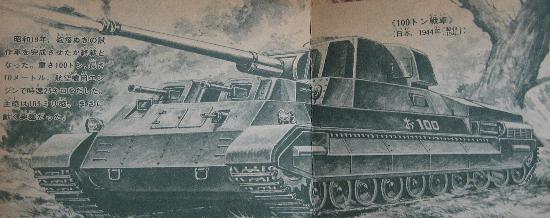
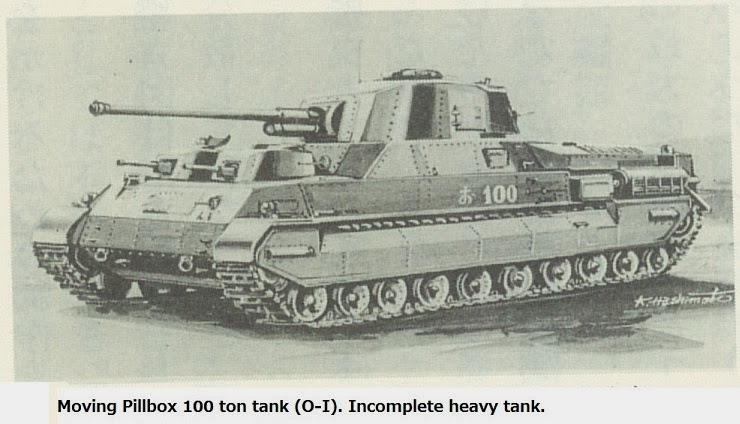
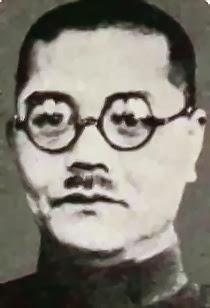
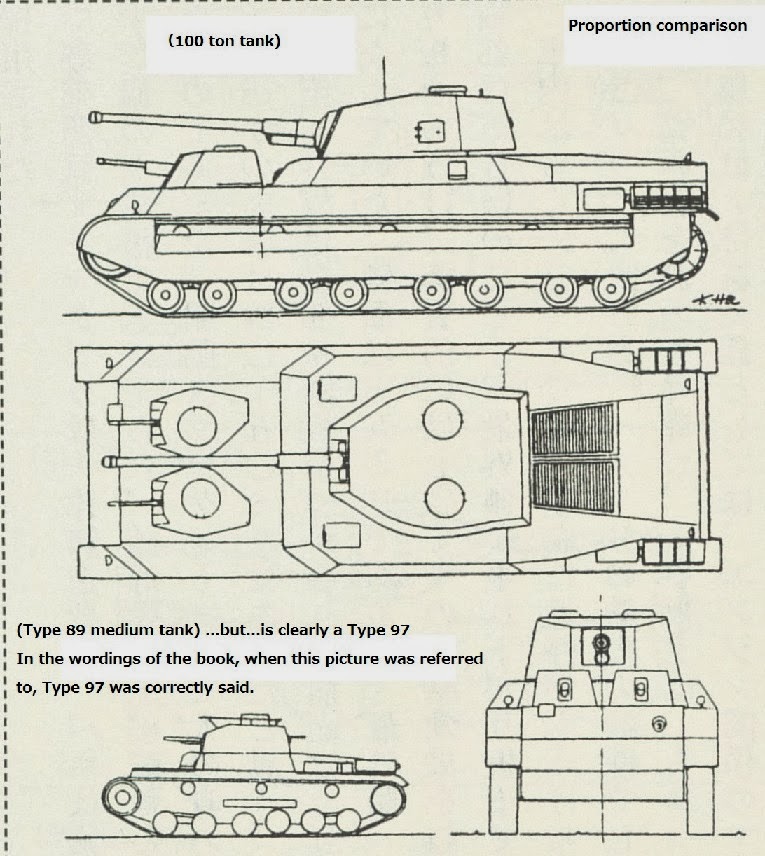
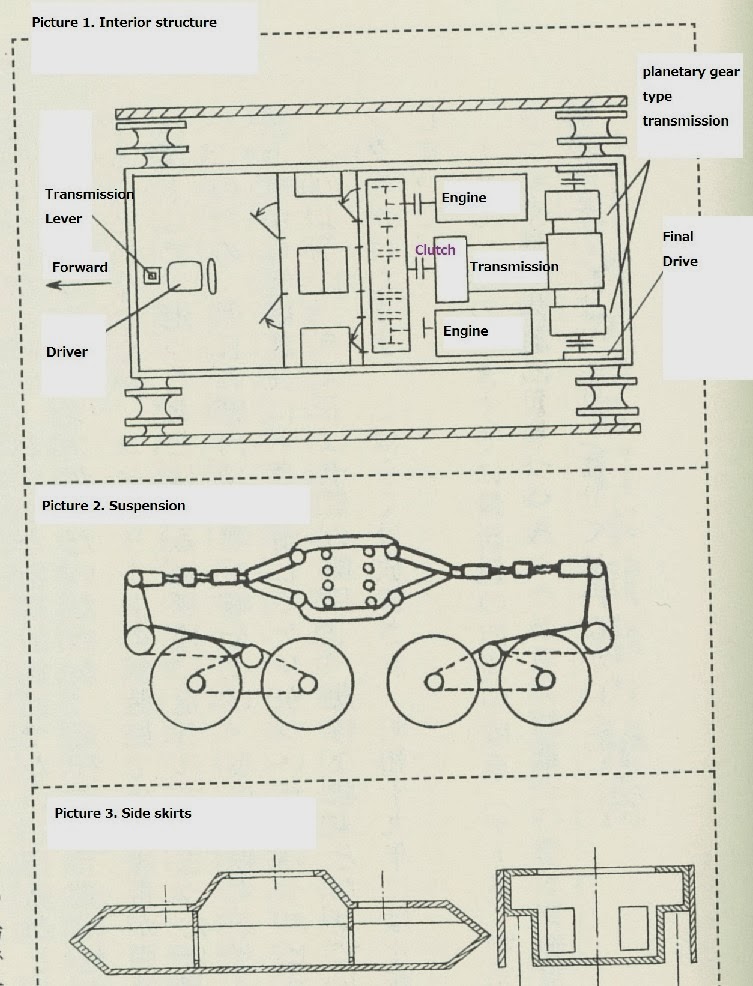
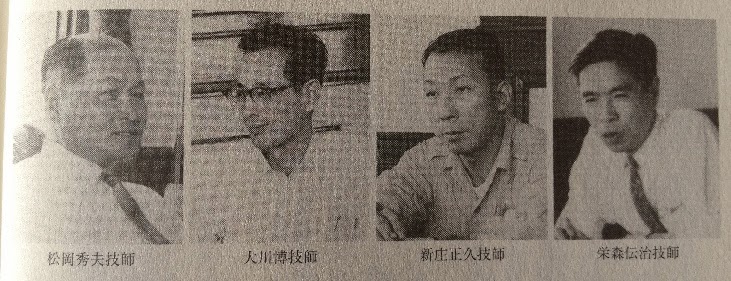
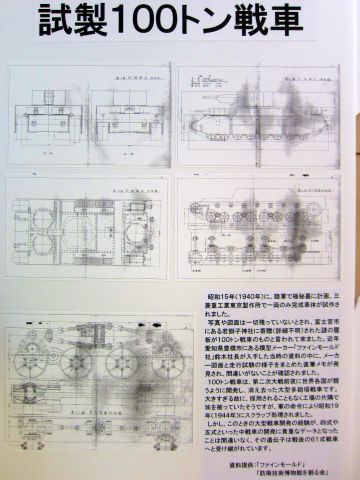
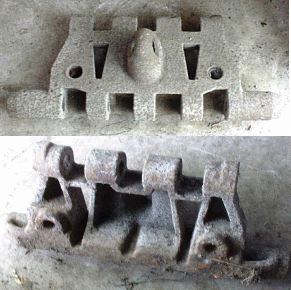
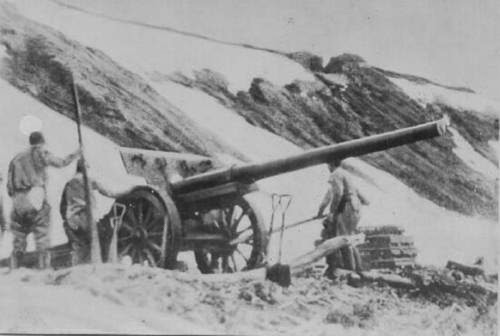
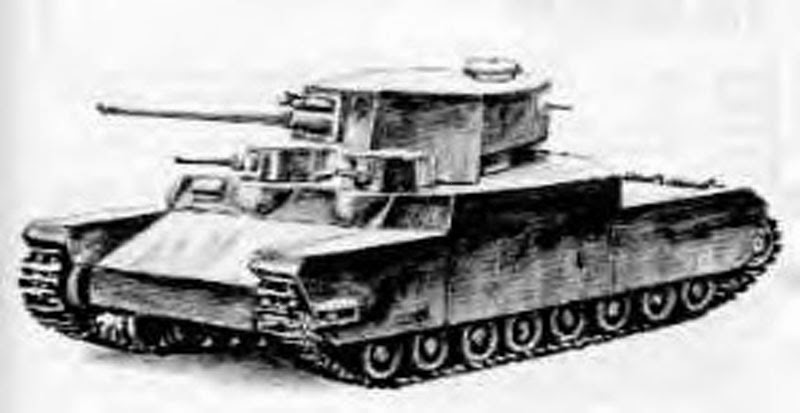
Pingback引用通告: 超测服上的日本5级重坦 | 坦克世界XVM战绩插件中文官方站
可以预见的是 日系HT是有多菜鸡了。。。
好早的文章啊……可以看出WOT多么能放卫星
Pingback引用通告: 很快会出的日本重坦 | 坦克世界XVM战绩插件中文官方站
Pingback引用通告: Yuri Pasholok的QA | 坦克世界XVM战绩插件中文官方站